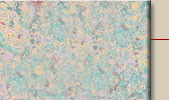|
|

|
The benefits of Rolfing that are most commonly experienced include and are not limited to the following:
BODY - Alignment, posture and shape more closely approach the gravitational optimum. Improved symmetry and functional balance and less pain.
BREATHING - More freedom and ease in breathing. Greater depth and distribution of breath throughout the torso, often accompanied by a measurable increase in vital capacity.
MOVEMENT - Truer alignment of body segments in motion. Better balance. Greater resilience and flexibility. Smoother, more “light and free” quality of movement. Increased and more symmetrical ranges of motion.
ENERGY - A sense of increased vigor and more available energy. More efficient use of energy. Normalization of perceived temperature in extremities.
BODY AWARENESS - Increased, more sophisticated levels of proprioception and kinesthesia. A sense of mental clarity and increased perceptual activity.
RELAXATION - Lower daily tension levels through resetting of sympathetic/parasympathetic balance. This can help with issues such as fibromyalgia. Lowered tendency to express stress as physical tension. Deeper levels of relaxation more easily obtained.
EMOTIONAL - Feelings more accessible and recognizable. Facilitation of therapy or other growth processes. An increase in the depth of insight.
SLEEP - Deeper, more restful sleep. Reduced insomnia.
BODY TISSUES - Improved skin tone and color in normal and scarred skin. Softer, more resilient texture to muscle and soft tissues.
* * * * * * * * * * * * * * * * * * * * * * * * * * * * * * * * * * * * * * *
The ROLFING process may often improve the situation of individuals who have a history of:
1. Injury or illness that creates residual scar tissue, adhesions, or chronic postural adaptation to pain. Examples: surgery, fractures, disease.
2. Chronic misuse, unconscious stress and warp of the physical structure. Examples: improper exercising, faulty posture.
3. Emotional tension and psychological stress affecting the body as patterns of held tension, restriction of free movement, etc. Examples: teeth grinding, hunching of shoulders, restriction of breath.
4. Habitual activities (work, sports, etc.), repetitive stresses, and unconscious postural imitation can create aberrant movement and structural patterns. Examples: computer programmers, postal carriers, dancers, hair stylists, baseball pitchers, golfers.
These changes, which may occur, are the direct result of the partnership and participation of both the client and the Rolfer.
| |
| |
| |
|
|
|
